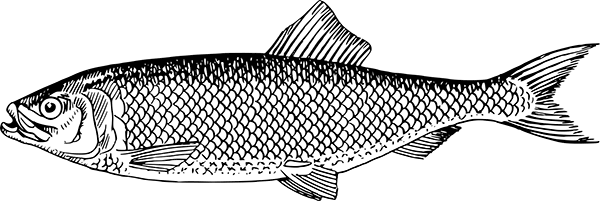On the large vessels developed by the Dutch for voyages to the fishing grounds off Scotland and England and for on board gutting and salting
BUSS
Bluff-bowed (a front end tending towards the rounded) with a curving stem (the extension of the keel which forms the most forward part) and broad of beam, the herring buss was not built for speed, but stability.
It had three masts. The main was square-rigged, also carrying a topsail; the fore could be square or jib-rigged (a triangular sail also attached to the bowsprit); the mizzen (the one at the back) was generally gaff-rigged (a spar attached at a slant carrying a four-sided sail, the side to the rear longer than the side attached to the mast). The main and mizzen masts could be lowered, making it easier to shoot the nets.
The herring buss was developed by the Dutch fisheries in the fifteenth century, a larger vessel capable of the longer voyages made possible through the innovation of salting and barreling fish at sea. The desirability of longer voyages was to do with the fact that the major Dutch herring fisheries were actually along the coasts of Scotland and England.

By the late sixteenth and early seventeenth centuries, herring busses would typically have a keel length of 50 ft, a beam width of between 15 and 17 ft and a crew of around fifteen, including coopers and picklers. Generally, they were capable of carrying up to thirty five lasts, although some could carry considerably more. With 13,200 fish to the last, weighing approximately two tons, we’re talking a lot of herring.
In essence it was a factory ship. The valuable market for prime matjes herrings at the beginning of the herring season was met through use of the ventjager (sale hunter) – small, fast boats which raced back to the Dutch ports. They also supplied the busses. At the Dutch fishery’s peak in the 1620s it had a fleet of around 2,000 vessels working the British coastline.
The buss was perceived by the Dutch and in England and Scotland as being central to the miraculous growth of Holland’s economic power. Between the seventeenth and nineteenth centuries British governments introduced several incentives aimed at encouraging a shift towards a buss fishery. Once established, there was a rapid transition to the lugger.
Books
The Herring-Busse Trade by Simon Smith, London, 1641
England’s Interest, or, A Brief Discourse of the Royal Fishery in a Letter to a Friend, London, by James Puckle, 1696
The History of the Dutch Sea Fisheries by A Beaujon, London, 1884
The Royal Fishery Companies of the Seventeenth Century by John R Elder, Glasgow, 1912
The Herring and the Herring Fisheries by James Travis Jenkins, London, 1927
Sailing Drifters by Edgar J March, London, 1952
